Farmers are increasingly faced with a daunting task: increasing crop yields for a growing world population while trying to minimize the impact of their management decisions on fragile watersheds.
But several years of research at a critical Indiana watershed appears to show that systems comprised of no-till, cover crops and proper nutrient management can improve soils, optimize yields and reduce fertilizer costs, and also help clean up nutrient-loading issues in waterways through better infiltration and water-storage capacity.
“This solution could actually give farmers better yields and provide everyone the things that they want with water quality and quantity issues — and not cost agriculture money. Now that is an elegant solution,” says Robert Barr a hydrologist for Indiana University-Purdue University-Indianapolis (IUPUI).
Fragile Watershed
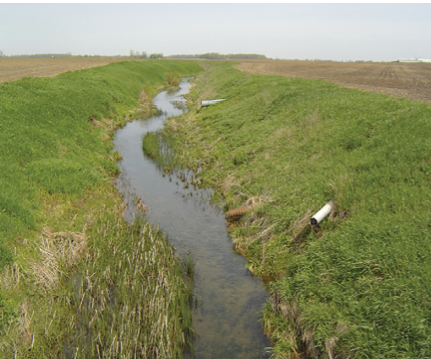
Since 2005, Barr has played a leading role in gathering data and seeking solutions for water-quality problems in the Eagle Creek Watershed and Eagle Creek Reservoir in central Indiana.
The reservoir provides drinking water for the city of Indianapolis, and is fed by a watershed stretching 162 miles to the north that includes 53,900 acres of agricultural land — predominantly corn and soybean fields.
Most of the agricultural land in the watershed is tiled. While that has certain benefits for a farmer, this also speeds up the movement of water through fields, Barr says — sending more water and nutrients through the system at a greater velocity.
At issue are flooding, sediment loads, high nutrient content — particularly nitrogen and phosphorus — elevated levels of agricultural chemicals like Atrazine, and excessive E. coli bacteria.
Those concerns led to the formation of the Eagle Creek Watershed Alliance, a coalition of scientists, government agencies and various groups seeking solutions with a holistic approach and an emphasis on environmental stewardship.
Barr says he and other stakeholders began with the assumption that agriculture was the problem. But after working with Indiana no-tillers, he became convinced that agriculture could be a very big part of the solution.
No-Till Benefits
Barr says his thinking took a dramatic turn in 2007 when he visited farms operated by no-tillers Mike Starkey and Jack Maloney.
“I walked into a field and said, ‘What’s wrong?’” Barr recalls. “It had been raining hard for days and I’m standing in the middle of this field and asked myself, ‘Where’s the water?’ I had just driven by fields of standing water to get there.”
The field is made up predominantly of a Brookston clay soil, a potentially hydric soil that, in the absence of tile, is extremely poorly drained. Barr had previously studied the soil and the area — including historic photos that showed the landscape to be very wet — and he considered such areas might be best converted to wetlands.
“There ought to have been ponding everywhere,” Barr says. “These fields normally look like lakes after a heavy rainfall. They don’t look like that field did.”
Prior to seeing the no-till fields, Barr had already looked for natural depressions where wetland areas could be constructed. That would have required taking roughly 5% of Starkey’s and Maloney’s farms out of production and causing logistical problems. But seeing the results of both farmers’ practices put an end to that idea.
In addition to being no-till operations for more than a decade, both farms were planting annual ryegrass as a winter cover crop. Buffer strips and grass waterways were also being used. Those practices enabled the no-tillers to reduce applied nitrogen rates and, perhaps more importantly, improve water infiltration in the soil profile.
Intrigued by the fact that the no-till ground was storing more water than nearby tilled fields, Barr began working with Starkey and Maloney. Although Barr doesn’t have an agricultural background, he noted the farming practices appeared to make a big difference in water-holding capacity.
“We learned that Mike’s field acts different, and so does Jack’s,” he says. “They didn’t get wet like we would expect. Fields that used to be wet after a half-inch rain, and had water standing on them, now take an almost 2-inch rainfall before anything happens.”
And if the water stays in the field, so do the things Barr and others are trying to keep out of the reservoir. Once nutrients and pesticides enter a reservoir, they’re very difficult to remove, so the approach of the Center for Earth and Environmental Science, where Barr is a researcher, focuses on preventing those substances from ever entering the water system.
New Monitoring Approach
Recently, the School Branch portion of the Eagle Creek watershed was selected as a National Water Quality Initiative watershed, and Starkey has enrolled as the first Indiana farmer to participate in a new “Edge of Field” sampling program.
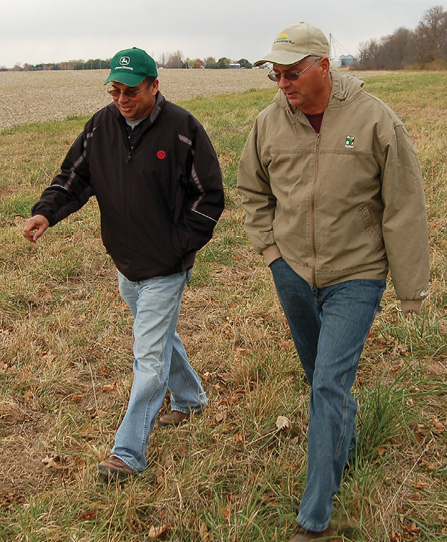
Operated by the USDA’s Natural Resources Conservation Service (NRCS), the program seeks to find out just how much difference best conservation measures make in terms of water quality.
Starkey has contracted to conduct regular edge-of-the-field sampling for a 6-year period, providing data that reflects water quality in a no-till, best practices, environment. The goal is to quantify just how much of an impact no-till, cover crops, and nutrient management has on water quality.
“It’s very difficult to determine what percentage of acres under non-conservation practices it takes to overwhelm what the ‘good’ producers are doing,” Barr observes. “If 90% of the acres were no-tilled and had cover crops, would that be enough?
“Personally, I think those best-management practices really make a huge difference, but this will be our first opportunity to actually measure that effect.
“It’s an extremely complex issue with lots of variables — crop rotations, timing of nutrient application, rainfall — but I think this testing program will give us very important information.”
Approximately 90% of row-crop acres in the School Branch subwatershed are under some form of conservation tillage, with many of the no-tillers using cover crops.
Managing Water
For farmers, best practices to help mitigate water-quality issues include precise, responsible nutrient-management practices and vegetative cover for riparian areas, no-till practices and cover-crop seeding — all practices Barr witnessed at the Starkey and Maloney farms.
No-till and cover crops not only limit erosion — which leads to sedimentation and the transporting of phosphorus downstream — but also enhance water storage in the soil through increased infiltration.
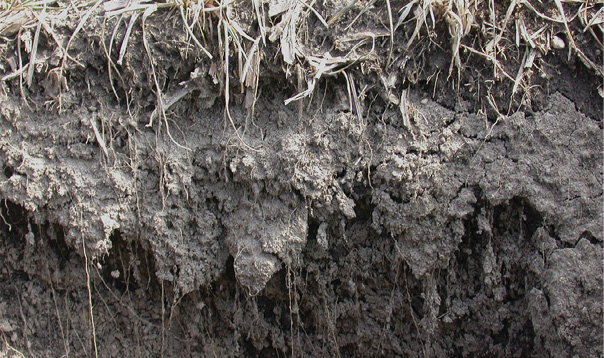
Cover crops also take up leftover nutrients, rather than allowing them to be washed into the reservoir.
The Eagle Creek Watershed Alliance offers producers cost-share funding for numerous agricultural practices, including cover crops, filter strips, grass waterways, no-till modifications and creation or restoration of wetlands.
There are also incentives for urbanites — permeable pavement, roof vegetation cover and rain gardens — because it acknowledges not all of the water-quality issues are caused by farming.
“Phosphorus is interesting, because when we start looking at phosphorus at high flows, it goes up across the board everywhere,” Barr notes. “That means there are multiple sources for the phosphorus.
“We have lots of septic systems in this watershed. We have what regulators refer to as ‘non-sewered communities’ — which means you have the pipe coming straight out into the stream — and we have wastewater treatment plants, so we have a lot of phosphorus sources in addition to farmland.”
Wastewater treatment plants are also being monitored, particularly for phosphorus, and the facilities are being urged to treat the water they discharge with chemicals to remove phosphorus and nitrogen.
Bigger Rains The Rule
Exacerbating water-quality issues in the Eagle Creek watershed, and other regions in the U.S., is the fact that much of the country is experiencing a marked increase in the number of days each year during which rainfall exceeds 2 inches.
In the Corn Belt, the number of days increased by 27% from 1957 through 2007. The western Corn Belt — from North Dakota to Texas — experienced a 13% increase, while the number of 2-inch-plus rainfall events in the Southeast was up by 18%. The Northeast experienced the largest increase at 58%.
To make matters worse, it appears that more of the big storms are occurring early in the season, prior to crop growth, according to Barr. Stream discharge increases dramatically with big rainfall events, he notes, sending water coursing through the watershed and carrying nutrients from agricultural and nonagricultural land alike along with it.
“Water slams into the system and shoots right through it, carrying everything in its path along with it,” Barr says. “That’s not how we keep nutrients in the soil, and water on the landscape — it’s a bad scenario.”
Sampling water in the Eagle Creek system revealed that, in the absence of big rainfall events, the total suspended solids (TSS) fraction is right around the Indiana Department of Environmental Management’s benchmark of 30mg per liter.
But when water is moving rapidly through the system, clay particles suspended in the water have a charge that causes phosphorus and triazines to become attached and transported along with the water — right into the reservoir.
Complicating matters, says Barr, is that evidence points to a continued increase in large rainfall events and more early-season storms. Big rainfall translates into across-the-board larger amounts of nitrates at test sites, in addition to sediment and other water-carried substances.
Nutrient Management
Addressing that problem continues to be one of the watershed’s biggest challenges.
That’s why Barr advocates using nutrient-management practices to get the right source of fertilizer applied when and where it’s needed, to protect it, and to use no more than is necessary for optimum yields.
On the Starkey farm, nutrient management begins with applying only what the crop needs. Because of effects of no-till and cover crops, Starkey has been able to reduce nitrogen application rates to 0.7 to 0.8 pounds per target bushel.
“We’re seeing our soils releasing nutrients we can tap into thanks to the biological activity in the soil from no-till practices,” he says. “Essentially, we get free nutrients, and with high fertilizer costs and water-quality issues, we aren’t going to put on anything our plants don’t need.”
That conclusion is backed-up with side-by-side fertilizer plot research conducted on his farm showing good crop performance at reduced rates when no-till and cover crop practices are in place.
Last year’s severe drought, Starkey points out, left tons of nitrogen throughout the watershed that was unused and vulnerable to loss.
Cereal rye and annual-rye cover crops on his farm, however, captured and recycled much of that nitrogen, preventing it from escaping into the water system.
Starkey also spoon-feeds his corn crop with split nitrogen applications. Nitrogen is applied as a liquid in the seed furrow and also side-banded with the planter. Additional liquid nitrogen is applied as a sidedress treatment when the crop is up and growing.
In the NRCS edge-of-field sampling program, Starkey will be comparing his nutrient management system side-by-side with more traditional methods and sources.
On the “best practices” areas, he’ll be using all-liquid fertilizers — including phosphorus and potassium — formulated by Agro-Culture Liquid Fertilizers.
“I know that no-till and cover crops help improve water quality,” Starkey says. “I hope that this project will provide some solid numbers that convince water-quality people — and the people who make policy — that we can have clean water and productive agriculture.”
Hard-To-Find Answers
Water-quality answers are complex and elusive, Barr says. Each year is different in terms of rainfall quantity and timing, as well as cropping and nutrient applications.
“We have rainy years and dry years. We have dry years and even drier years. We have soybeans one year and corn the next,” he says.
“We have fertilizer application at just the right time, so we have good uptake, and we have application just before a big rain that washes it away.
“We have all of these different pieces coming into our puzzle. So what have we learned with our years of monthly sampling? Every year is different. That’s what makes finding answers so challenging.”
And when excessive rain falls at the wrong time, it means problems in terms of water quality.
Because of intense rains relative to spring herbicide application, for example, the Eagle Creek Reservoir’s untreated water exceeded U.S. EPA standards for triazines in drinking water from 1997 through 2006.
“The challenge,” Barr says, “is to apply nutrients as precisely as possible.”
Tile Flows
Differences in rainfall amounts and timing, as well as cropping, have made it difficult to get a good handle on the nutrient level in tile flow.
Intrigued by Starkey’s increased levels of soil-organic matter, Barr and other researchers have been trying to get long-term data on what’s coming out of field drainage systems. But that’s proven to be a difficult task because of all the variables involved.
There is no escaping the fact, however, that tile drainage systems can act as conduits for the nutrient loading that takes place downstream. Barr acknowledges, however, that field drainage is necessary for agricultural land in the Eagle Creek Watershed to be productive.
Crosby and Brookston are the predominant soil types in the area. Although both are deep and silty, they are very poorly drained and would not be farmable most years without tiling.
So tiling takes care of the drainage issue, but also contributes to nutrient loading.
“Tiling is necessary, but it shortens the connection — it takes water out of the soil faster and, with it, constituents that compromise water quality,” he says. “We’ve observed that when you have a cover crop out there, the field becomes like big sponge and excess water doesn’t get into the tiles as quickly.
“Anecdotally, field tiles that used to flow after a half-inch rain on Mike’s farm now — with cover crops — require a 2-inch rain to flow. That’s huge — slowing the pulse, slowing the amount of nutrients going down the stream and into the reservoir. That’s why this monitoring project Mike is participating in is so important. We need to document and demonstrate it.”
Improved soil health, no-till and covers appear to accomplish much of what wetlands do without taking land out of agricultural production.
Barr says he doesn’t believe that storing more water on the landscape as wetlands, to reduce downstream flooding and nutrient loading, will on its own adequately address water-quality problems.
Soil-Based Solutions
One study regarding Mississippi River flooding suggested that converting 6% of the watershed land to bioswales, such as wetlands, would solve the problem. But Barr prefers to identify answers that allow agricultural land to remain productive.
That’s not something many farmers would want to take part in and, besides, better answers may lie beneath the soil surface.
“The solutions that we were looking for are in the soil,” Barr says. “Healthier soil gives us the water storage we need, and can help us manage the nutrients. Part of the problem we’ve always struggled with is that this is such a big problem — 93 million-plus acres of corn planted last year. That’s not something that you’re going to fix with a bioswale.
“Bioswales help us in some places and can be part of the answer, but 93 million acres of corn takes a different landscape approach. Understanding the natural health and capacity of your soil, I believe, is the direction that is needed.”
Barr points out that phosphorus and nitrogen — two of the biggest water-quality concerns — travel different pathways from farmland. Nitrogen is soluble and simply moves with the water unless it becomes attached to organic matter.
“This idea of increasing soil-organic matter really fascinated us,” Barr says. “Soil health appears to benefit water quality, as well as the crop.”
Phosphorus, as well as some herbicides, becomes bound to soil particles, which makes keeping soil in place a major water-quality goal. A lot more sediment moves off land when there’s nothing on it, Barr says.
“Let’s figure out how nitrogen, phosphorus and sediment are moving on the landscape,” he says, “because if we figure that out, we can figure out how to keep it up there, right?”
The Big Picture
Water-quality issues aren’t confined to Indiana, of course. Most states, particularly in the Corn Belt and Northeast, have sensitive watersheds where agriculture clashes with water quality.
Nationally, agriculture gets the majority of the blame for the “dead zone” in the Gulf of Mexico — a 5,840 square mile area where oxygen levels are so low they don’t support aquatic life.
Farmers who want to avoid legislated restrictions on nutrient practices are increasingly looking to no-till and more careful nutrient management. A survey released this year by the Water Quality Association found more than half of all Americans are worried about the quality of water they’re drinking.
“If agriculture doesn’t lead on this issue, someone else will,” Barr says. “In my opinion, every farmer would be wise to very carefully consider their farming practices. Ninety-three million acres in corn annually tells the story.
“That’s 93 million acres receiving nitrogen and phosphorus and other substances. The potential negative impact on water quality is huge, so applying nutrients precisely is a priority. So I think no-till and other practices can make a huge difference in improving water quality.”
Although Barr has learned a lot about agriculture by working with Indiana no-tillers, he emphasizes that when a farmer asks him about nutrient management and other best practices, he refers them to farmers like Starkey and Maloney who are actually doing it.
“I think many farmers are trying very hard to achieve sustainability,” Barr concludes. “After all, they and their families all drink the same water.
“A system that harms natural resources isn’t sustainable, but environmentally sound farms can also be cost-effective and productive. Everybody wins.”

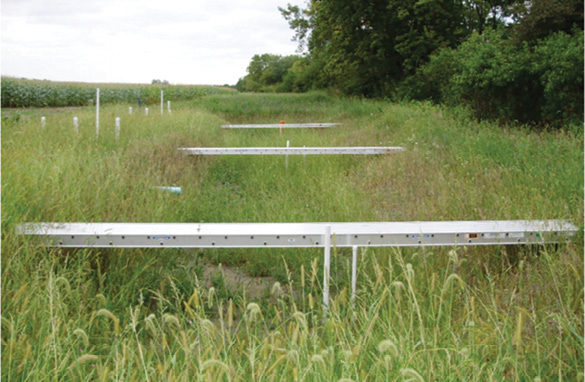
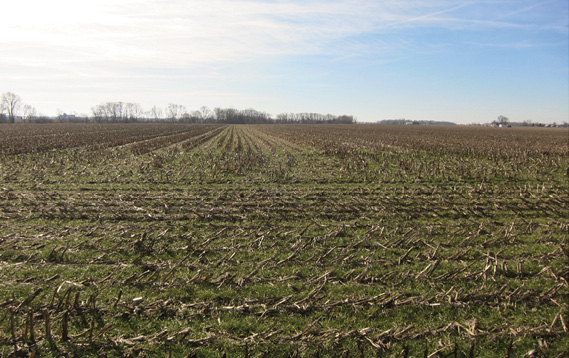
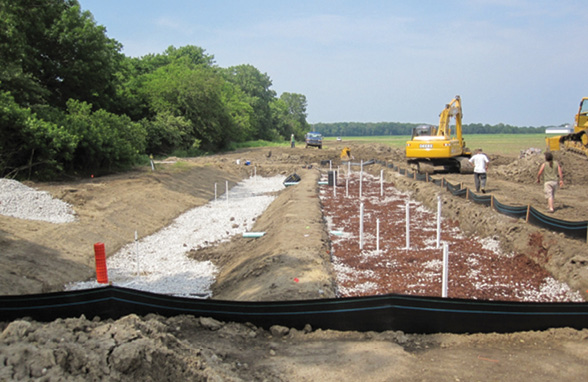





Post a comment
Report Abusive Comment